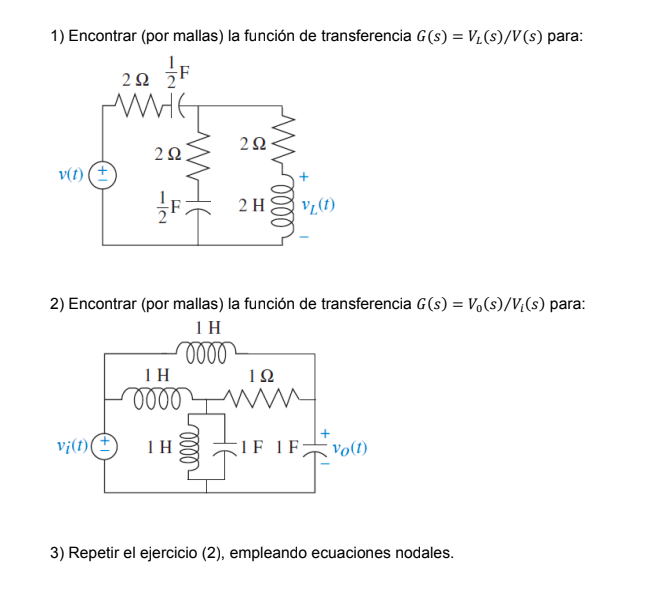¡Tu solución está lista!
Nuestra ayuda de expertos desglosó tu problema en una solución confiable y fácil de entender.
Mira la respuestaMira la respuesta done loadingPregunta: 1) Find (by meshes) the transfer function G(s) = VL (s)⁄V(s) for: 2) Find (by meshes) the transfer function G(s) = V0 (s) Vi ⁄ (s) for: 3) Repeat exercise (2), using nodal equations.
1) Find (by meshes) the transfer function G(s) = VL (s)⁄V(s) for: 2) Find (by meshes) the transfer function G(s) = V0 (s) Vi ⁄ (s) for: 3) Repeat exercise (2), using nodal equations.
- Esta es la mejor manera de resolver el problema.Solución100% (1 calificación)Te mostramos cómo abordar esta pregunta.
Este consejo generado con IA está basado en la solución completa de Chegg. ¡Regístrate para ver más!
For the first step, convert the elements of the circuit (inductors and capacitors) to their Laplace equivalents: Inductor: Capacitor: .
Then simplify the entire circuit accordingly.
kindly upload se…
Mira la respuesta completa
Texto de la transcripción de la imagen:
1) Encontrar (por mallas) la función de transferencia G(s) = V(s)/() para: 22 25 WVG W 222 2Ω. v(t) llle w NI 2 H Vit) 2) Encontrar (por mallas) la función de transferencia G(s) = V.(s)/Vi(s) para: 1H 0000 1 Η 12 0000 w vit) 1H IF IF Vo(1) 3) Repetir el ejercicio (2), empleando ecuaciones nodales.

Estudia mejor, ¡ahora en español!
Entiende todos los problemas con explicaciones al instante y pasos fáciles de aprender de la mano de expertos reales.
